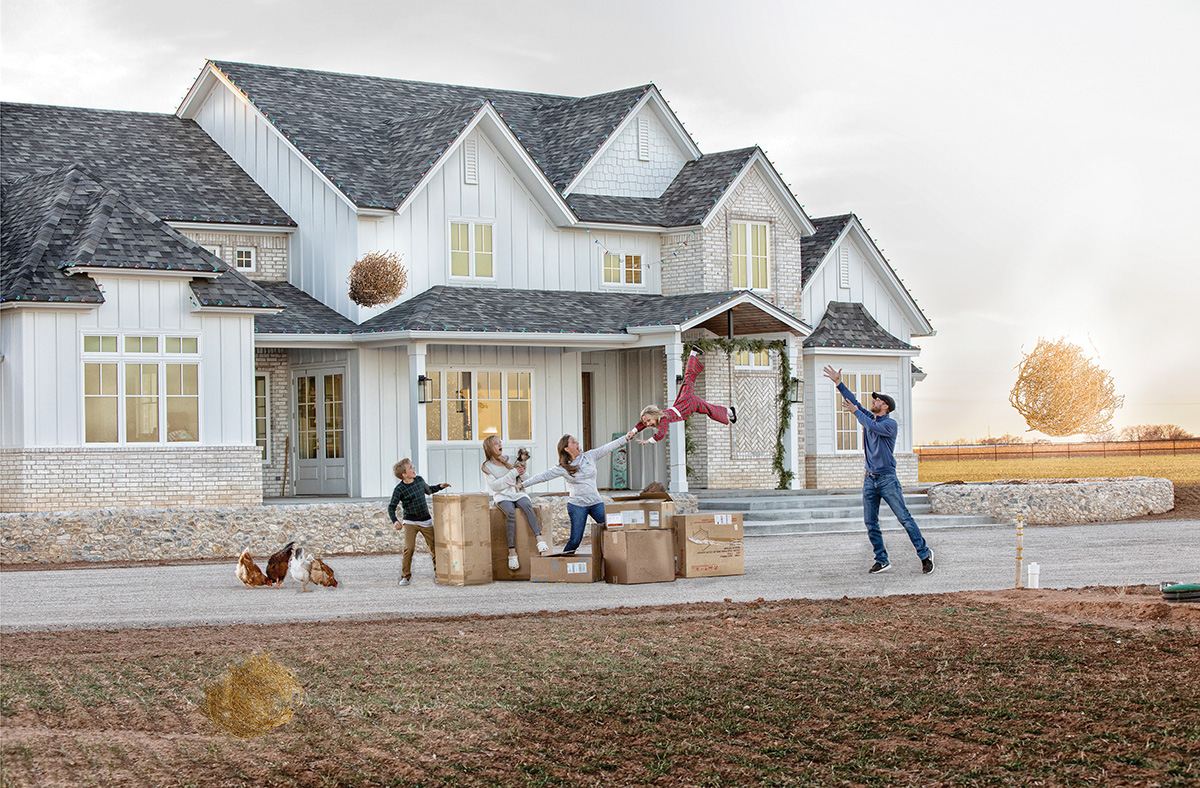Years ago, while working as the director of membership for a university, Leslie Ann Kitten, M.Photog.Cr., CPP, came to a realization: Her time was not her own. Her job required her to be at someone else’s beck and call, and she had little control over her schedule.
When she started working toward a career change to professional photography, the longtime shutterbug did so with the intent of creating a business that would let her pursue her artistic dreams while offering the balance and flexibility to live out her personal dreams as well.
After several years of planning and doing photography sessions part time, Kitten launched her photography business as a full-time venture in 2006. The initial objective was to establish a steady income stream while providing a creative outlet that she could manage according to her long-term goals.
“I did everything step by step knowing what my long-term goal for each step would be,” she explains. “Everything had a purpose, which guided my work and attached meaning to every decision I made.”

BUDGETING FOR THE FUTURE
From the beginning, Kitten diligently saved a percentage of her income every month, starting at 5% and working up to 15%. The savings covered sales tax and all product purchases, and the rest was invested. To meet her savings goals, Kitten operated frugally. She used the same camera for years and was disciplined about new equipment purchases. At trade shows, she’d show up with a list of items she needed and stick to that list without diversion. Whenever possible, she’d purchase gear at discounts from other photographers who were retiring or getting out of the business.
Ultimately, she used the savings to pay for a new, 4,700-square-foot studio, which she built entirely debt free in 2011. She purchased the land eight years before constructing the building, biding her time to build out her dream studio when she could afford to do it the right way. “My goal was to be debt free so I didn’t have to work to pay off the business,” says Kitten. “That gave me the freedom to try new avenues and pursue new things artistically because I wasn’t afraid all the time about paying off debt.”

PROSPERITY AMID THE PANDEMIC
When the COVID-19 pandemic disrupted the flow of business, Kitten’s disciplined saving gave her the cushion to keep the business running without needing to lay off any of her employees. Additionally, the slowdown in in-person business offered an opportunity to review her expenses and determine areas that could be streamlined.
“I tell this to people all the time: You don’t necessarily need to make more money, you just need to keep a bigger percentage,” she says. “COVID gave me the time to dive in and get lean. It also offered a chance to do more strategic marketing and spend more time talking with my clients on the phone. Even when we couldn’t meet face to face, I wanted to keep that personal touch.”
THEMED ARTISTRY
Kitten’s effective budgeting and business development provided a stronger platform for artistic exploration. She used this platform to create two richly imagined, immersive photo experiences that have become showpiece campaigns for her studio.
The Santa Experience. When Kitten’s daughter was six weeks old, Kitten didn’t want to take her to the mall to see Santa because it had been such a bad experience the year before. Instead, she built a little North Pole set, got a friendly Santa to come visit, and staged what she calls the Santa Experience. It went so well that she opened it to clients, and people just kept coming. She did it again the following year, expanding her sets and enhancing the experience. By the third year, people started coming to the event from as far away as Phoenix and California. Clothing companies became interested in partnerships. Kitten was even asked to travel to other towns and stage the experience there.
What makes it so special? First, Kitten doesn’t use backdrops. She and her husband build new sets from scratch each year, which means if you want to be photographed on a set, you have one chance. It also means many people come back year after year to get photographs in the new scenes.
In addition, Kitten emphasizes that it’s not just a photo session; it’s an experience. The event has something for the entire family, with mimosas for the parents, cookies for the kids, and gift boxes for everyone. Santa remembers the kids from years prior and makes sure to reference their previous meetings. At every stage, Kitten and her team endeavor to give guests the royal treatment, taking their time and letting them enjoy each step of the experience. Kitten photographs a child about every 10 minutes, working with more than 100 families on the Santa Experience days between October and December.

The Wizarding World. The Santa Experience was so successful that Kitten created another immersive experience she could do at a different time of year. The Wizarding World is a magically themed experience that plays off the child wizard books and movies that are currently wildly popular. Kitten stages the experience in the summer, a typically slower time for her studio. She started by creating a potion room set where kids could do experiments and make potions while she photographed. Food and drinks match the theme. “In addition to providing another creative experience, the Wizarding World has evened out some of the ebbs and flows of the business while helping us get in as many people as possible over a short period of time,” says Kitten.
Kitten has added an Easter experience with lambs and a farm scene, and she continues to look for opportunities to create elaborate photographic experiences. “The idea behind all of these experiences is to give people something they can’t find anywhere else,” she says. “It’s not just about capturing portraits. It’s about crafting the entire day and creating a memory for the whole family.”

FINDING BALANCE
Work-life balance is central to everything Kitten does. To maintain balance, she keeps strict business hours that take her kids’ school schedules into account. During business hours, she is entirely dedicated to clients. After hours, she is unavailable. One day a week she stays open later to accommodate families with school-age children. Defining these boundaries is important, she feels, especially in our ultra-connected world.
“Our generation is at a huge disadvantage for work-life balance because we’re used to being in constant contact with people,” she says. “So, we feel this overwhelming urge to satisfy people all the time. But I think we do them a huge disservice when we try to do that because we can’t give them our full attention all the time.”
To build a balanced work-life schedule, Kitten breaks down what she needs to earn each week by the time required to complete the work. Then she reverse engineers her time commitment and number of sessions based on her income goals. She uses a similar process to balance extra days of work required during her busy time (typically the fall) against taking off for extended periods when the studio is slower (usually the summer).
What makes this possible is understanding the numbers, understanding how to allocate the time commensurate with the work that needs to be done, and pricing items accordingly.
“Photographers often operate under the law of diminishing returns,” she says. “We all want to do things perfectly, so we end up doing extra work without extra compensation. If you spend 30 extra post-production hours on an 8x10 print, you’re not going to make any more money on it. The price for a product needs to reflect the amount of time you spend on it. The perfectionists in us eventually affect our businesses, and that ultimately affects our home lives.”
Striking the balance between creating superlative art and getting fairly compensated is a challenge, but it’s a process that can be guided by goal setting. For Kitten, it’s again a matter of planning and strategy. “Look at what your goals are, figure out how to accomplish them, and then schedule the time needed to do that work,” she says. “As long as you look at your goals over the long term, there is a time and a season for everything. And if you find the balance that works for you, you’ll be surprised at what you can accomplish.”
Jeff Kent is editor-at-large.


 View Gallery
View Gallery


